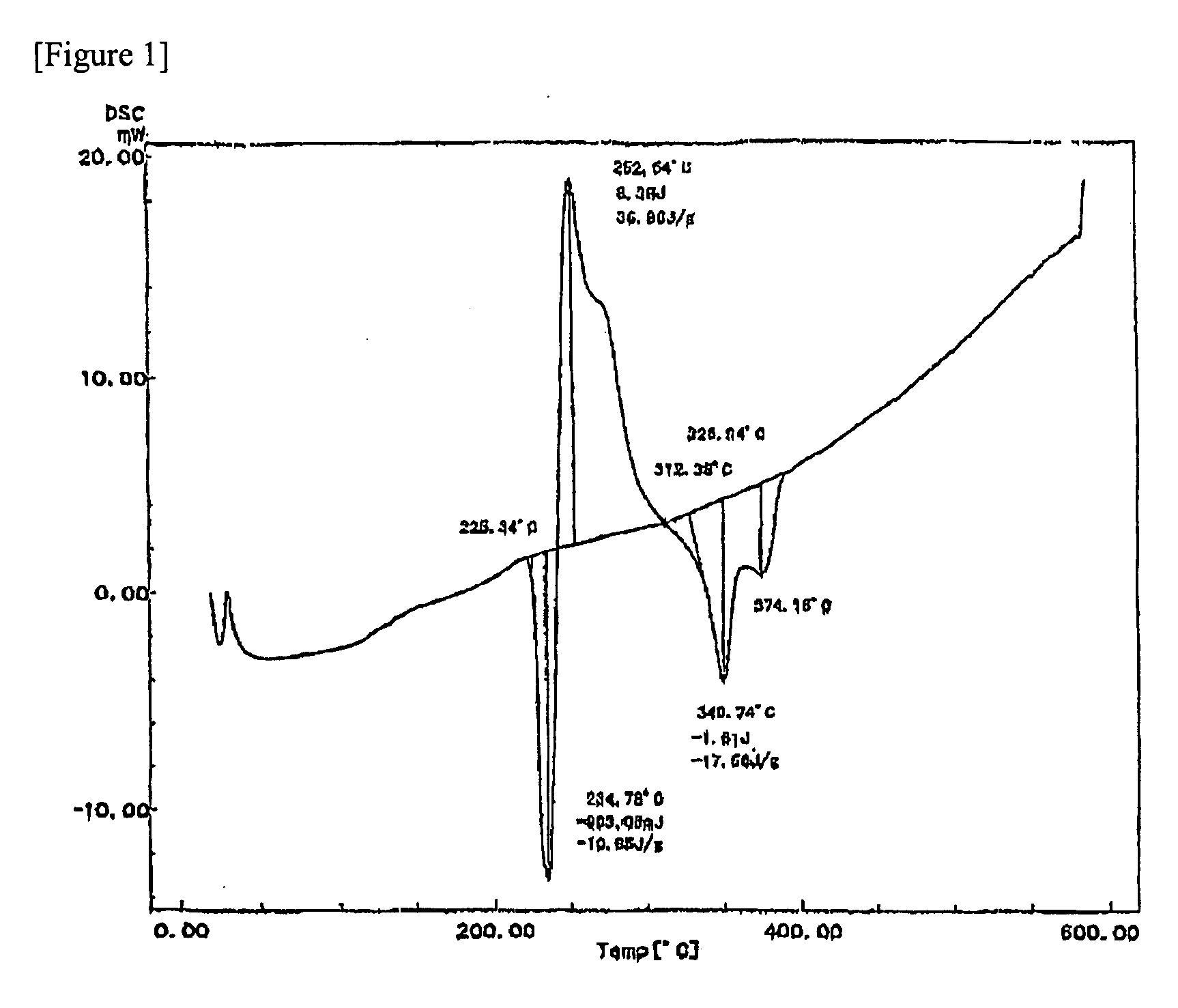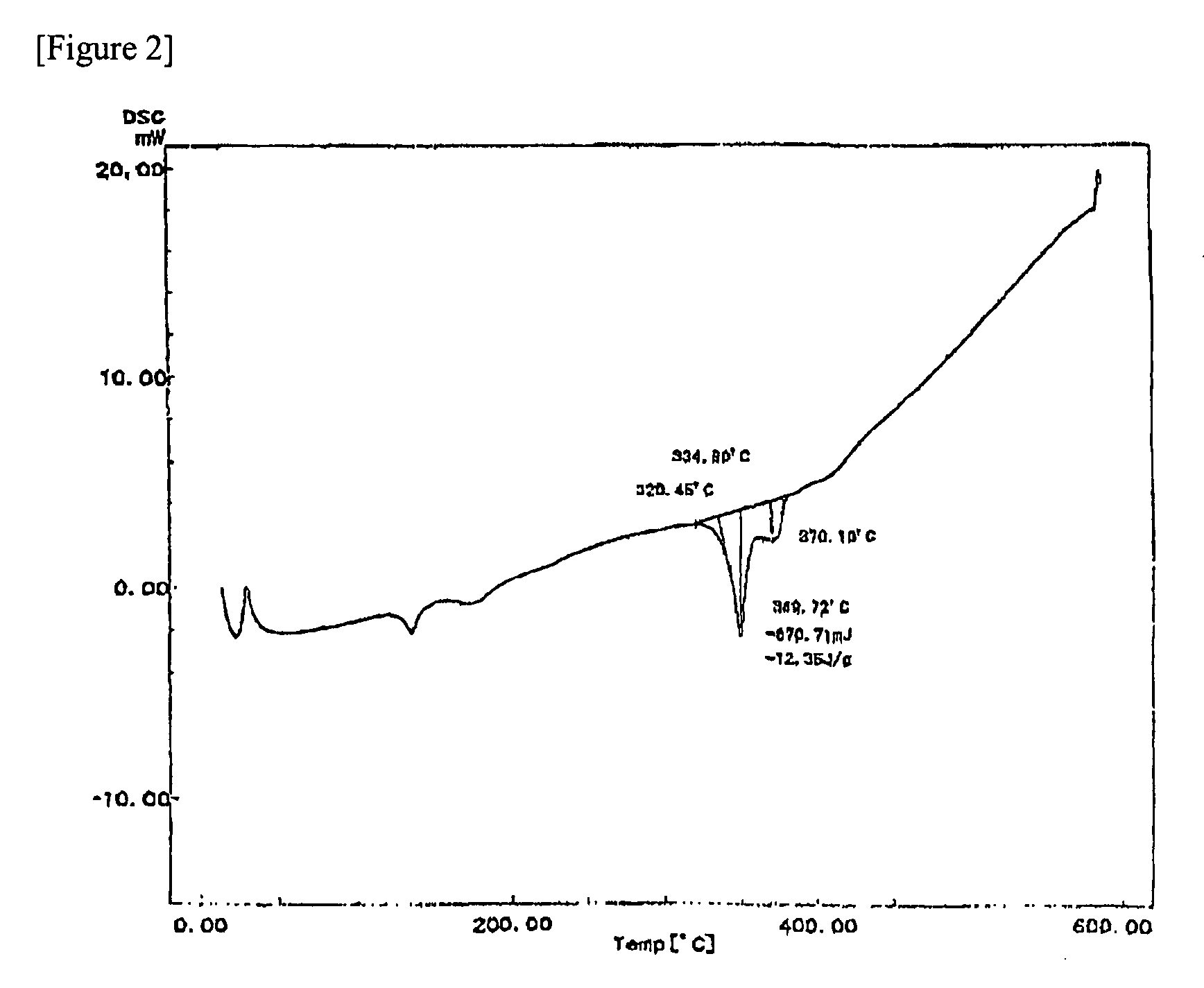Conductive Filler and Solder Material
a technology of soldering material and conductive filler, which is applied in the direction of soldering apparatus, manufacturing tools, and capacitors, etc., can solve the problems of limited use of au—sn based metal alloys, lead harm, and high cost of materials, and achieve high temperature resistan
- Summary
- Abstract
- Description
- Claims
- Application Information
AI Technical Summary
Benefits of technology
Problems solved by technology
Method used
Image
Examples
example 1
[0053](1) Production of First Metal Particles
[0054]In a graphite crucible, were placed 6.5 kg of Cu particles (purity: 99% by weight or more), 1.5 kg of Sn particles (purity: 99% by weight or more), 1.0 kg of Ag particles (purity: 99% by weight or more), 0.5 kg of Bi particles (purity: 99% by weight or more), and 0.5 kg of In particles (purity: 99% by weight or more). Using a high frequency induction heater, the mixture in the graphite crucible was heated under an atmosphere of helium gas (purity: 99% by volume or more) so that the temperature of the mixture became 1,400° C., thereby melting the mixture to obtain a molten metal. Next, the molten metal obtained was poured over the brim of the crucible into a spray vessel having an atmosphere of helium gas. From a gas nozzle provided around the brim of the crucible, helium gas (purity: 99% by volume or more; oxygen content: less than 0.1% by volume; pressure: 2.5 MPa) was blown onto the molten metal to gas-atomize the molten metal, th...
example 2
[0068]The first metal particles and the second metal particles before classification prepared by gas atomization in Example 1 were classified by using a current classifier (TC-15N: manufactured by Nisshin Engineering Co., Ltd.) at a setting of 40 μm, followed by collecting the undersize particles. A conductive filler (average particle diameter: 4.7 μm) obtained by mixing the first metal particles and the second metal particles thus obtained at a weight ratio of 100:83 was used as a sample.
[0069]Next, a soldering paste was prepared by mixing 91.5% by mass of the above-mentioned conductive filler, 5.95% by mass of a rosin type flux, 1.7% by mass of triethanolamine (oxide film remover), and 0.85% by mass of hexylene glycol (solvent), and treating the mixture with a kneader equipped with a vacuum deaerator, a three roll mill, and a kneader equipped with a vacuum deaerator in succession.
[0070]The above-mentioned soldering paste was printed on a Cu substrate to thereby form a soldering pa...
example 3
[0078]A conductive filler (average particle diameter: 4.7 μm) obtained by mixing the first metal particles and the second metal particles classified in Example 2 at a weight ratio of 100:55 was used as a sample for differential scanning calorimetry. The DSC chart obtained by the calorimetry is shown in FIG. 3. As shown in FIG. 3, it was confirmed that the sample exhibited endothermic peaks at 230° C. and 351° C. The endothermic peak at 230° C. corresponds to the melting point of 224° C., and the endotherm is 10.6 J / g. In addition, the sample characteristically exhibited exothermic peaks at 253° C. and 300° C.
[0079]Next, a soldering paste was prepared by mixing 91.5% by mass of the above-mentioned conductive filler, 4.25% by mass of a rosin type flux, 1.7% by mass of triethanolamine (oxide film remover), and 2.55% by mass of hexylene glycol (solvent), and treating the mixture with a kneader equipped with a vacuum deaerator, a three roll mill, and a kneader equipped with a vacuum deae...
PUM
| Property | Measurement | Unit |
|---|---|---|
| Temperature | aaaaa | aaaaa |
| Temperature | aaaaa | aaaaa |
| Temperature | aaaaa | aaaaa |
Abstract
Description
Claims
Application Information
 Login to View More
Login to View More - R&D
- Intellectual Property
- Life Sciences
- Materials
- Tech Scout
- Unparalleled Data Quality
- Higher Quality Content
- 60% Fewer Hallucinations
Browse by: Latest US Patents, China's latest patents, Technical Efficacy Thesaurus, Application Domain, Technology Topic, Popular Technical Reports.
© 2025 PatSnap. All rights reserved.Legal|Privacy policy|Modern Slavery Act Transparency Statement|Sitemap|About US| Contact US: help@patsnap.com



